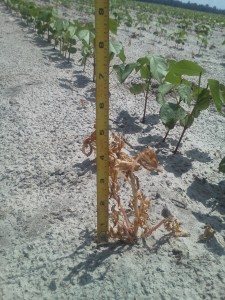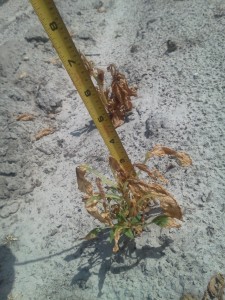We have been aggressively fighting Palmer amaranth (pigweed) in the cotton fields of Columbia County. Most of our farmers are planting varieties tolerant to Liberty herbicide, which is no silver bullet, but has at least been a crutch. Our recent efforts have been to apply glyphosate + metolachlor where pigweeds haven’t emerged, and Liberty + metolachlor where we are trying to catch pigweeds before they are 4″ tall. For our diversified farmers who are busy managing their other crops, it is very difficult to be on time to spray these weeds. We went through a four week dry period here, and most of the cotton is in nonirrigated fields. We are optimistic the metolachlor that has been sprayed will have some preemerge activity with the recent rainfall. We have seen our share of problems including heavy infestations at planting, apparent application problems of pre-emerge herbicides, difficulty timing Liberty applications, and poor coverage in tire tracks behind the sprayer. We are steadily working on these situations to try to improve the program. However, we are feeling the pinch that Dr. Stanley Culpepper @ UGA recently wrote about. He said that it is costing Georgia farmers $80-100 per acre to manage this weed. http://agfax.com/2013/06/06/georgia-cotton-battling-palmer-amaranth-a-costly-fight/ The attached pictures are from three different farms, each one with a different weed pressure and unique challenges. Overall, I am proud of the field conditions at this time, but it hasn’t come without challenges, and good farmers rising to meet them.
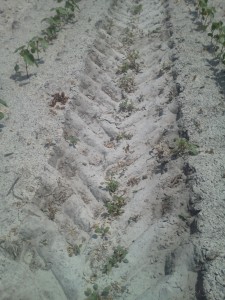
Palmer amaranth emerged thick in the sprayer wheel track. This was following a Liberty+ Metolachlor application. We don’t know if the weeds here emerged before or after that application.
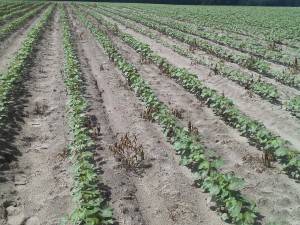
Glyphosate was a real asset in controlling these Palmer amaranth. There are a few misses that will need to be hand pulled. This was following a Fomesafen/Diuron preemerge program.
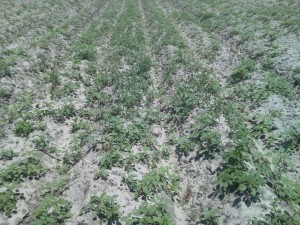
Palmer amaranth on beds before burndown application. These were sprayed with Paraquat before planting.
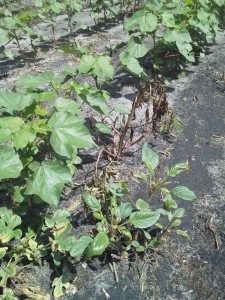
These were missed with Liberty, because of the size at application timing, and subsequently missed with glyphosate. This is the first farm I learned about ALS resistant PA in about 2007 or 2008.
One thing I will say, I wish we had some straw or residue on these fields to shade the soil and prevent emergence of weeds. I will conclude that thought in Part 2.

